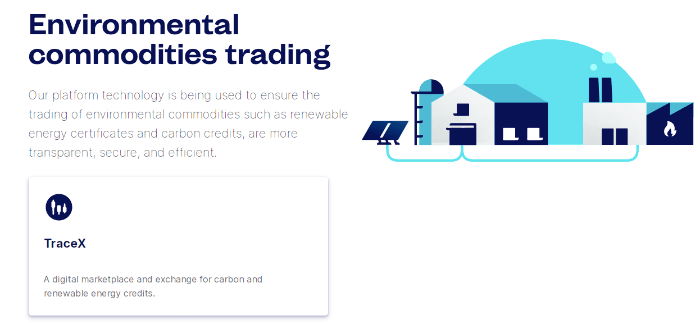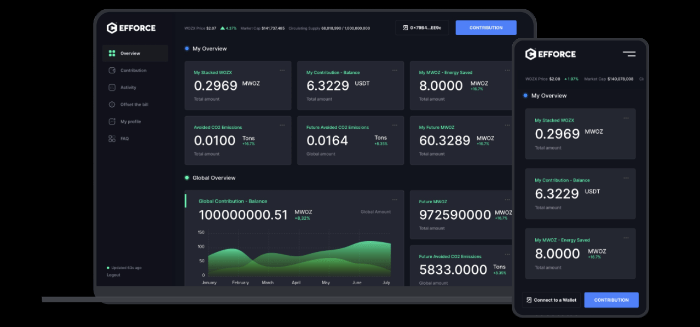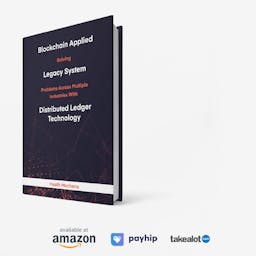
Recently, the discussion around energy use and sustainability when it comes to Proof-of-Work in Bitcoin mining in particular has intensified. The likes of Elon Musk and Michael Saylor have gone as far as meeting with prominent bitcoin miners in North America and major blockchain ecosystem players including Galaxy Digital, HIVE Blockchain, Argo Blockchain, Blockcap, Core Scientific, Riot Blockchain, Marathon Digital Holdings, and Hut 8 Mining to promote efficient energy usage and transparency in the hopes of accelerating sustainability initiatives on a global scale. The parties are said to have agreed to form the Bitcoin Mining Council.
Many detractors of Bitcoin and other digital currencies have even pointed to the issue of high energy cost in crypto mining as a hurdle too big to overcome and even cited that if not addressed, the issue could hamper adoption. Proponents of Bitcoin and decentralization on the other hand argue that Bitcoin in fact accelerating renewable energy adoption and that about 75% of the energy powering Bitcoin mining already comes from renewables. This is seen as a net positive for the evolution of energy consumption for our civilisation.
The facts around these issues are yet to be brought to light which is why having transparency will be key since some investors who deeply care about these issues are reluctant to enter the space due to conflict of interest especially institutional players that have ethics committees that may not approve of investments in areas deemed unsustainable. With this backdrop, it is perhaps pertinent to look at some of the projects in the crypto space that are involved in the energy solutions market.
Energy Web’s mission is to help establish low-carbon electricity systems by building infrastructure leveraging blockchain technology. Energy Web Chain was launched in 2019 and it’s an open-source blockchain that caters to the energy sector by providing enterprise solutions. The EW blockchain-based virtual machine is designed to support and propel decentralised app development for the energy sector. Their Decentralized Operating System (EW-DOS) is a full stack that encompasses front-end apps and a range of software development toolkits.

Source: Energy Web
Energy Web offers its EW Origin software development toolkit which is designed for building new corporate renewable energy procurement solutions. It is also aimed at providing fully certified charge guarantees for electric vehicles, low-carbon fuel sourcing, and carbon tracking. Their EW Zero open-source app makes it possible for renewable energy buyers to locate and source procurement options from a range of digital marketplaces all over the world. Through a single, easy-to-use digital interface, Zero actually integrates myriad marketplaces including those that are built with EW Origin.
With so many high-profile partnerships from grid operators, renewable energy developers, utilities, and corporate energy buyers, Energy Web has become a leading energy blockchain ecosystem. Some of EW’s partners include E.ON, EDF, Hitachi, Shell, and more others.

Source: Energy Web
The native utility token of the Energy Web Chain is the Energy Web Token (EWT). The project is a collaboration between Rocky Mountain Institute and Grid Singularity. The EWT token is traded on cryptocurrency exchanges such as KuCoin, Kraken, BitMart, and Uniswap.
Power Ledger (POWR)
Power Ledger is a technology company that utilizes blockchain technology to facilitate energy and environmental commodity trading. Based in Australia, Power Ledger launched its project in 2016, aimed at building for new energy markets. The technology enables tracking and trading of energy, environmental commodities and flexibility services.

Source: Power Ledger
By combining solar power and blockchain, Power Ledger hopes to offer energy solutions that are sustainable and less expensive than conventional energy alternatives.The company develops software that allows consumers and producers to track, trace and trade energy.
Power Ledger’s a peer-to-peer energy exchange platform runs on the Ethereum network. According to Power Ledger, some of their clients include CUB in Australia, ekWateur in France and TDED in Thailand.
The Power Ledger platform’s track and trade features are meant to help clients have better provenance and flow of energy capabilities. Through the use of Power Ledger’s technology, consumers can be afforded choice over their energy use and also have the ability to peer to peer trade.
According to Power Ledger, the P2P trading of solar energy can deal with excess solar in the grid without subsidy. Their xGrid product allows consumers to sell energy from their solar panels to others connected to their shared electricity grid. What the technology does is manage the settlement of energy transactions from generation to consumption. This makes dynamic price-discovery possible. Their µGrid offering enables energy trading within microgrids and is aimed at maximizing return on investment by making it possible for buildings to trade energy between each other. Aside from xGrid and uGrid, Power Ledger has at least four other products that utilize blockchain technology including their Power Port, C6, C6+ and Asset Germinator.
The Power Ledger platform handles this simply and transparently using the blockchain. The platform enables residents to trade solar energy with each other and monetise their roof space. It means residents can buy from those closest to them, keeping the investment, profit and benefit of renewables within the community.
Power Ledger runs on two blockchain layers and the ecosystem utilizes two crypto coins. The first being the Power Ledger (POWR) token and the other being Sparkz which is an Ecochain stablecoin token that is tethered to the value of a local currency. Ecochain is a private consortium blockchain. Power Ledger also leverages the Ethereum blockchain. The POWR token makes it possible for application hosts and participants to utilize the platform. In the case that, for instance, a host doesn’t hold the adequate amount of POWR, they would not be able to access the platform. POWR tokens can be traded via the Ethereum Smart Bond exchange.
Efforce was co-founded by famed Apple co-founder, Steve Wozniack. It is dubbed a first-of-its-kind blockchain-based energy-saving platform. It’s core value proposition is that it allows participants to generate an income while also developing or contributing to initiatives that are targeted at environment-saving energy efficiency.
Efforce is supposed to be a marketplace that brings together market participants. The Efforce platform is meant to allow contributors to benefit from the energy savings that are generated by energy efficiency projects across the globe. WOZX tokens are ERC-20 utility tokens based on the Ethereum blockchain.

Source: Efforce
How Efforce works is that contributors are able to take part in energy efficiency projects through the acquisition of tokenized future savings. Enterprises would benefit from the energy efficiency augmentations at zero cost and the savings obtained as a result will be transparently written on the blockchain in real-time.
By utilizing smart contracts, the savings would be then redistributed to the holders of WOZX token and enterprises based on precise consumption or savings data. This would be all done without the need for intermediaries.
The general tokenomics of the WOZX token are based around the idea that consumers would initiate the fundraising for a specific energy efficiency project and contributors would then be able to participate with a stable coin into an energy efficiency project of their choosing.
The intention is that those holding WOZX tokens would then be used as the basis for deciding the allocation of the contribution. In this model, using the raised capital, savers would then implement the energy efficiency projects.
Whatever energy savings will result from this would be distributed to the contributors and the savers. By having the Efforce platform it means that token holders would have a marketplace where they can trade the interest stakes in the energy savings of the projects. A minimum of 1% of the total energy savings that are achieved will be distributed to all Efforce token holders.
The project has a dual token model which includes a stable coin and the WOZX token. The stable coin is generally used to fund the operations of the project and WOZX token functions as a utility token and also represents the platform’s incentives and rights. You can find WOZX on exchanges such as Bilaxy, Bithumb, and Uniswap.







